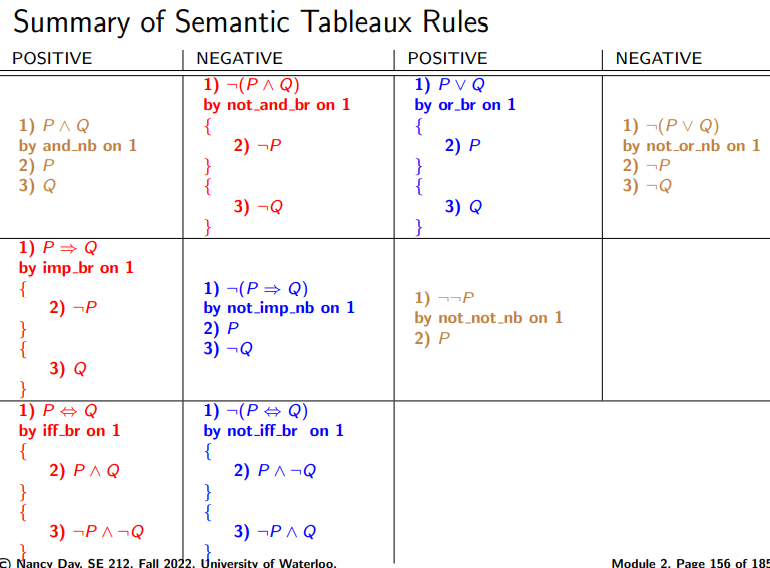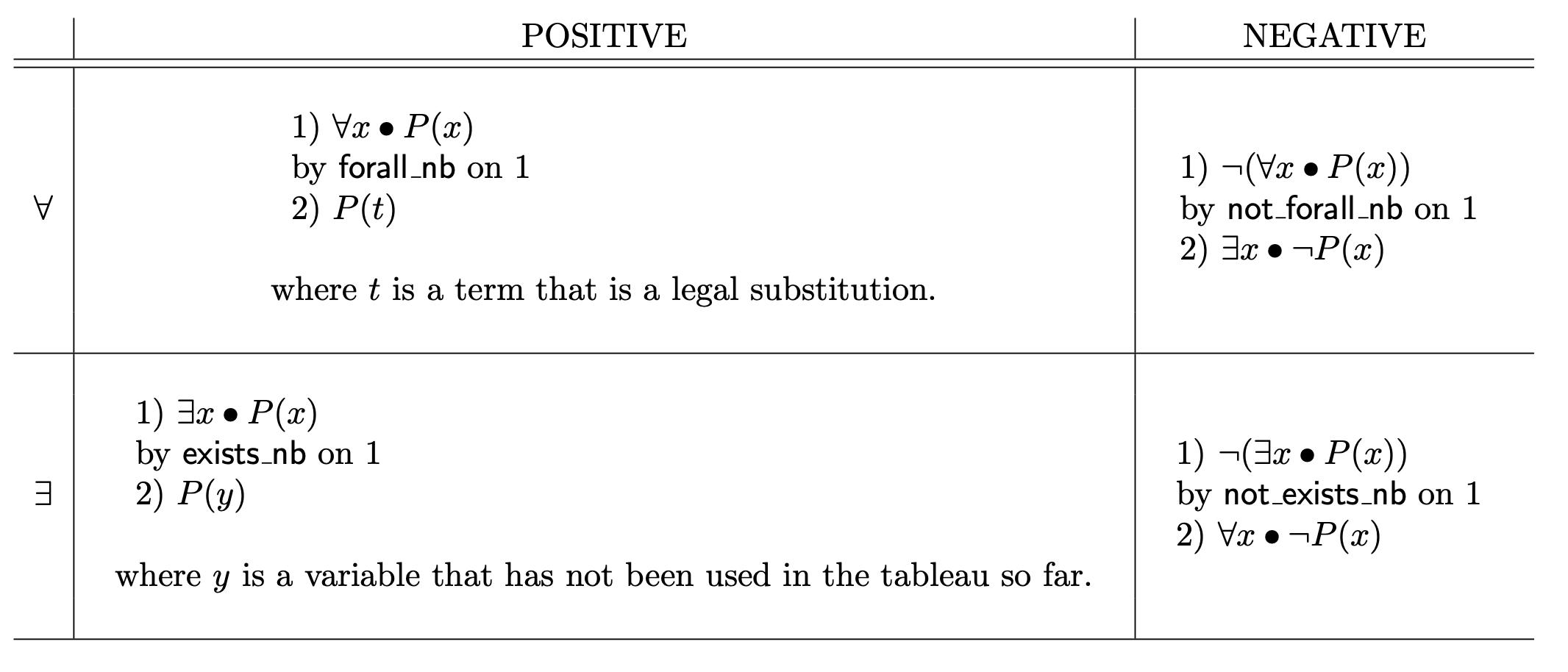Semantic Tableaux
Semantic tableaux is another way of showing an argument is valid. We actually use negations to have everything come to a contradiction.
br = branching
nb = non-branching


How to prove with Semantic Tableaux
- To show an argument is valid, we use a semantic tableau to show that is an inconsistent set of formulas, i.e.
-
- premise
-
- premise
-
- negation of conclusion
-
- To prove that a set is Inconsistent Formula, just list out the premises and close everything
-
- premise
-
- premise
-
title: Heuristic for Semantic Tableaux
These are general tips for shorter proofs.
Propositional Logic:
- Apply the non-branching rules first.
Predicate Logic:
- Apply the non-branching rules first.
- When developing a semantic tableau in predicate logic, use the: existential quantification, and negative universal rules before the universal, and negative existential rule.
Examples
#check ST
b & c, d, !(c & d) |- false
1) b & c
2) d
3) !(c & d)
by and_nb on 1
4) b
5) c
by not_and_br on 3
{
6) !c
closed on 5,6
}
{
7) !d
closed on 2,7
}
To prove that an argument is valid
#check ST
p & q | r |- !p => r
1) p & q | r
2) !(!p => r)
...1) a450 | bsup | !(a450 & bsup) by lem
2) case a450 | bsup {
3) conclusion by or_i on 2
}
4) Case !(a450 & bsup) {
5) a290 | !a290 by lem
6) case a290 {
7) conclusion by or_i on 6
}
8) case !a290 {
9) !a290 | !(a450 & bsup)} }
10) conclusion by or_i on 9
}
11) conclusion by cases on 5,6-7, 9-10
12) conclusion by cases on 1, 2-3, 4-11<→ a290 | !(a290 | a450 & bsup) | a450 & bsup by dm <→ a290 | a450 | bsup | !(a290 | a450 & bsup) <→ true by lem
Recognize that the above formula is not a Tautology.
!(a290 & a450)
1) !(a290 & a450)
2) !!(a290 & a4580 & bsup)
by not_not_nb on 2
3) a290 & a450 & bsup
by and_nb on 3
4) a290 & a450
5) bsup
closed on 1,4
6)